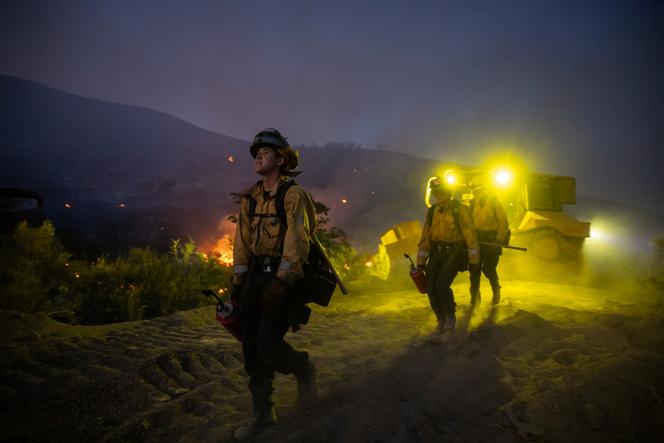


After a two-year lull, California is once again being plagued by wildfires. Among dozens of others, six fires considered to be major were active on Wednesday, June 19. Firefighters consider the start of this season unusually early, despite the fact that California has been spared the record heatwave raging across the Midwest and Northeast of the US.
The first fire, named "Post Fire," broke out on June 15 near Gorman, some 100 km north of Los Angeles. By Wednesday, it had burned some 8,090 hectares. It led to temporary closure of the I5 freeway, a major north-south route, along with the evacuation of over 1,000 campers, but caused no destruction to buildings, due to the area around Tejon Pass being sparsely populated. According to initial reports, the fire started in an automobile workshop and spread, benefiting from strong winds.
In Northern California, firefighters have been busy with two outbreaks. The first, which broke out on June 16, in Sonoma County, north of San Francisco, has been bringing back very bad memories for the region's winegrowers, some 20 of whose farms were reduced to ashes in 2020. Around 10 facilities have been destroyed. The second broke out on June 17, in Colusa County, 95 kilometers north of Sacramento. In two days, under the effect of the wind, it has already burned more than 6,000 hectares, according to firefighting agency CalFire.
What all these fires have in common is that they broke out in areas of scrub and tall grass, the first vegetation to dry out at the start of the season, particularly on south-facing land. At this stage, no forest has been affected by these "episodic or wind-drive, little mini outbreak of fires. They're classic, early-season fires," explained climatologist Daniel Swain. As in 2022, the Sierra Nevada experienced above-average snowfall in winter 2023-2024. The soil remains moist and the trees are protected.
This early start to the season has reminded Californians that the consequences of wildfires are continuing to mount. According to a study published on June 7, in the journal Science Advances, more than 50,000 Californians died prematurely between 2008 and 2018 due to inhalation of fine particles from wildfires. Scientists measured the concentration of these particles, known as "PM2.5" and linked to various respiratory or cardiac health problems, and compared this with mortality figures in the areas concerned. In 2018 alone, they estimated that 12,850 deaths could be attributed to PM2.5 inhalation.
You have 45.05% of this article left to read. The rest is for subscribers only.
